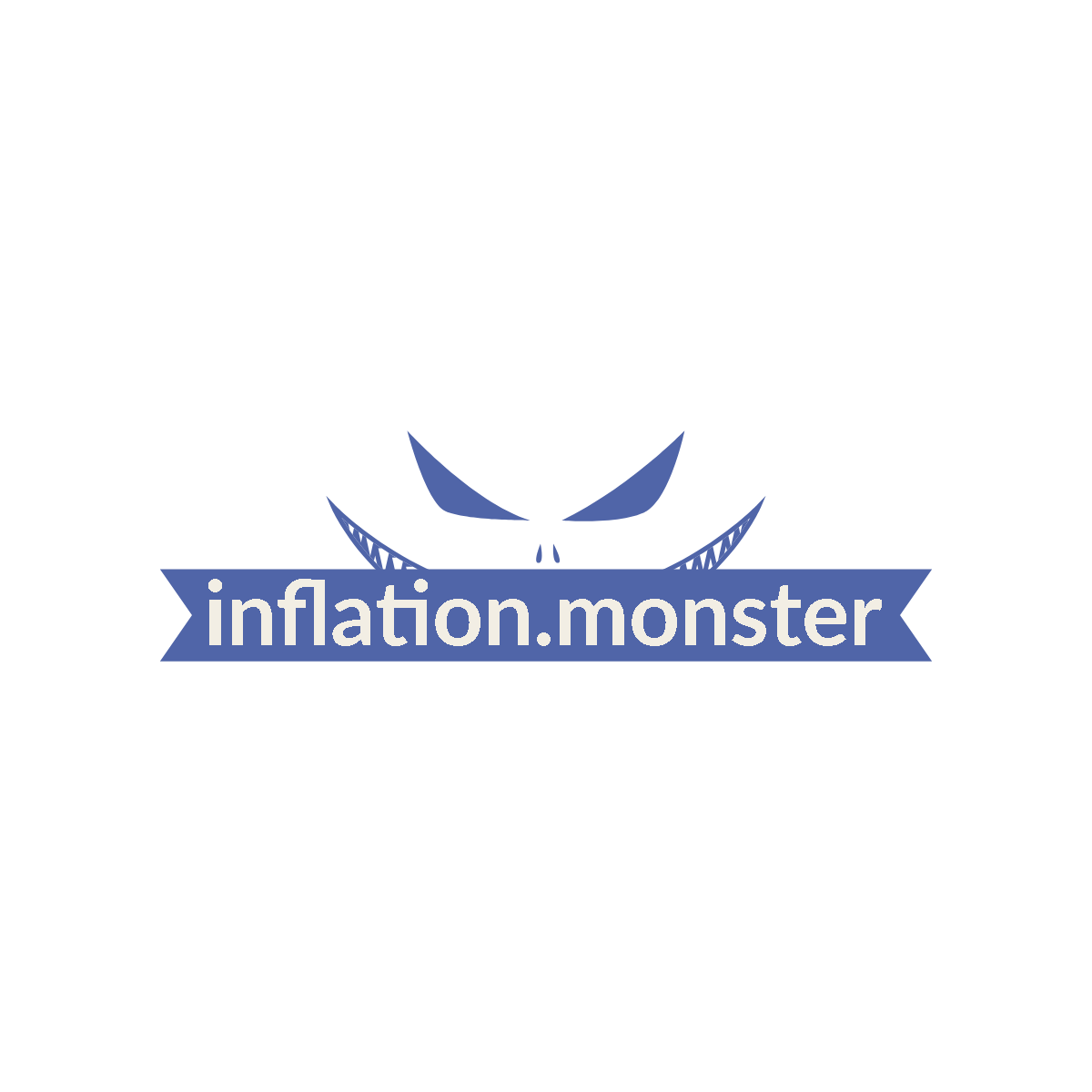If you’ve ever wondered about the mysterious relationship between inflation and currency depreciation, you’ve come to the right place. At Inflation.Monster, we’re here to be your trusted source for unraveling the complexities of inflation’s impact on money and economics. Join us as we dive deep into the world of hard money, explore the enigma that is inflation, and equip you with the knowledge to navigate the ever-changing financial landscape. Welcome to the realm where inflation and currency depreciation collide.

Causes of Inflation
Demand-Pull Inflation
Demand-pull inflation occurs when the overall demand for goods and services exceeds the supply. This typically happens when the economy is growing rapidly, and consumers have more disposable income to spend. As a result, businesses raise their prices to meet the increased demand. This type of inflation is often associated with strong economic growth and can be a sign of a healthy economy.
Cost-Push Inflation
Cost-push inflation, on the other hand, occurs when the cost of production increases for businesses. This can be due to factors such as rising wages, increased costs of raw materials, or higher taxes. When businesses face higher costs, they often pass these expenses onto consumers by raising the prices of their products or services. Cost-push inflation can hurt consumers’ purchasing power and lead to a decrease in economic activity.
Built-In Inflation
Built-in inflation, also known as wage-price spiral, is a self-perpetuating cycle of rising wages and prices. It occurs when workers demand higher wages to keep up with inflation, and businesses, in turn, raise prices to cover the increased labor costs. This results in even higher inflation and can create a vicious cycle where prices and wages continue to rise.
Effects of Inflation
Decreased Purchasing Power
Inflation erodes the purchasing power of money over time. As the general level of prices rises, the same amount of money can buy fewer goods and services. This means that individuals and households need to spend more money to maintain the same standard of living. It can be particularly challenging for those on fixed incomes or with limited savings, as their purchasing power is eroded even further by inflation.
Income Redistribution
Inflation can also lead to income redistribution within society. Those who own assets that can increase in value during periods of inflation, such as real estate or stocks, can benefit from rising prices. On the other hand, individuals whose incomes are fixed, such as retirees or low-wage workers, may struggle to keep up with rising prices. Inflation can exacerbate income inequalities and widen the gap between the rich and the poor.
Uncertainty and Market Distortion
High levels of inflation can create uncertainty and market distortions. Businesses may postpone investments due to uncertain future prices, leading to lower economic growth. Consumers may delay purchases, waiting for prices to stabilize. Additionally, inflation can create distortions in relative prices, making it difficult for businesses and consumers to make informed decisions. Overall, high levels of inflation can disrupt the normal functioning of markets and hinder economic development.

Measuring Inflation
Consumer Price Index (CPI)
The Consumer Price Index (CPI) is a commonly used measure of inflation. It tracks the average change in prices of a basket of goods and services commonly consumed by households. The basket includes various items such as food, housing, transportation, and healthcare. The CPI provides valuable information about changes in the cost of living and is widely used by policymakers, economists, and individuals to monitor inflation rates and make informed financial decisions.
Producer Price Index (PPI)
The Producer Price Index (PPI) measures changes in prices at the wholesale level. It tracks the average change in prices received by producers of goods and services. The PPI provides an indication of inflationary pressures within the production process before they are passed on to consumers. This index is particularly useful for businesses to monitor changes in input costs and adjust their pricing strategies accordingly.
GDP Deflator
The GDP Deflator is a broad measure of price changes for all goods and services produced within a country. It measures the average price change of the total output of the economy, including goods and services that are not included in the CPI or PPI. The GDP Deflator is often used to calculate real GDP by adjusting nominal GDP for inflation. This measure provides insights into the overall inflationary pressures within the economy.
Types of Currency Depreciation
Floating Exchange Rate
In a floating exchange rate system, the value of a currency is determined by the market forces of supply and demand. The exchange rate fluctuates freely based on factors such as interest rates, inflation, and economic performance. This allows the currency to adjust to external economic shocks and maintains a more flexible exchange rate regime. However, floating exchange rates can be volatile, leading to uncertainties in international trade and capital flows.
Fixed Exchange Rate
In a fixed exchange rate system, the value of a currency is pegged to the value of another currency or a basket of currencies. The exchange rate is fixed and does not fluctuate freely based on market forces. Central banks often intervene in the foreign exchange market to maintain the fixed exchange rate by buying or selling their own currency. Fixed exchange rates provide stability and predictability for international trade and investments, but can also lead to imbalances in the economy if not properly managed.
Managed Floating Exchange Rate
A managed floating exchange rate system is a hybrid between a fixed and floating exchange rate system. In this system, the exchange rate is allowed to fluctuate within a certain range determined by the central bank. The central bank intervenes in the foreign exchange market to stabilize the exchange rate when it approaches the boundaries of the range. This system provides some flexibility while also maintaining certain levels of stability in the exchange rate.

Factors Influencing Currency Depreciation
Interest Rates
Interest rates play a significant role in currency depreciation. Higher interest rates generally attract foreign investors who seek higher returns on their investments. As demand for the currency increases, its value appreciates. Conversely, lower interest rates can lead to currency depreciation as investors move their funds to countries with higher returns.
Inflation Rate
Inflation rates also impact currency depreciation. If a country has high levels of inflation, its currency’s value may decrease as the purchasing power erodes. This makes imports more expensive and can negatively impact the country’s trade balance. Countries with lower inflation rates generally have more stable currencies.
Trade Balance
The trade balance, which is the difference between a country’s exports and imports, can influence currency depreciation. A trade deficit, where a country imports more than it exports, can put pressure on the currency. This is because a greater supply of the currency is needed to pay for imports, leading to depreciation. Conversely, a trade surplus, where a country exports more than it imports, can strengthen the currency.
Investor Confidence
Investor confidence in a country’s economic and political stability can impact currency depreciation. If investors perceive a higher risk in a country, they may move their funds elsewhere, causing the currency to depreciate. Factors such as political instability, economic uncertainty, and regulatory changes can all influence investor confidence and, subsequently, currency depreciation.
Effects of Currency Depreciation
Impact on Imports and Exports
Currency depreciation can have significant impacts on a country’s imports and exports. A depreciated currency makes a country’s exports more competitive, as they become cheaper for foreign buyers. This can lead to an increase in export volumes and stimulate economic growth. However, currency depreciation also makes imports more expensive, which can lead to a decrease in imports and potentially result in higher domestic inflation.
Tourism and International Travel
Currency depreciation can impact tourism and international travel. A weak currency makes a country’s travel destinations more affordable for foreign tourists, leading to an increase in tourism revenue. Conversely, it also makes traveling abroad more expensive for domestic tourists, potentially leading to a decrease in outbound tourism. The effects on the tourism industry depends on the balance between incoming and outgoing tourists.
Foreign Investments
Currency depreciation can influence foreign investments in a country. A weak currency makes foreign investments relatively cheaper, attracting investors seeking potential returns. This can stimulate foreign direct investment and promote economic growth. However, currency depreciation also increases the risk for foreign investors, as the value of their investment may decrease if the currency continues to depreciate.
Relationship Between Inflation and Currency Depreciation
Inflation as a Cause of Currency Depreciation
Inflation can drive currency depreciation by eroding the value of money. When a country experiences high levels of inflation, the purchasing power of its currency decreases. This can lead to a decrease in demand for the currency on the foreign exchange market and result in currency depreciation. As the currency depreciates, the prices of imported goods and services increase, further fueling inflationary pressures.
Currency Depreciation as a Cause of Inflation
Currency depreciation can also be a cause of inflation. A depreciated currency makes imports more expensive, which can lead to higher prices for imported goods and services. This, in turn, can have a spillover effect on domestic prices, as businesses may pass on these increased costs to consumers. Currency depreciation can result in imported inflation and contribute to overall inflationary pressures within an economy.
Managing Inflation and Currency Depreciation
Monetary Policy
Central banks often use monetary policy tools to manage inflation and currency depreciation. They can adjust interest rates to influence borrowing costs and control money supply to manage inflationary pressures. Higher interest rates can help combat inflation by reducing demand and slowing down economic growth. Conversely, lower interest rates can stimulate economic activity and increase inflationary pressures. Central banks can also intervene in the foreign exchange market to stabilize the currency’s value.
Fiscal Policy
Fiscal policy can also be utilized to manage inflation and currency depreciation. Governments can use taxation and spending measures to influence economic activity and control inflationary pressures. For example, increasing taxes or reducing government spending can help reduce demand and mitigate inflation. Conversely, cutting taxes or increasing government spending can stimulate economic activity and increase inflationary pressures.
Exchange Rate Intervention
In some cases, governments may directly intervene in the foreign exchange market to manage currency depreciation. They can buy or sell their own currency to influence its value and stabilize the exchange rate. This intervention can be done through open market operations or by using foreign exchange reserves. However, exchange rate intervention can be costly and may not always be effective in the long run.
Examples of Inflation and Currency Depreciation
Venezuela’s Hyperinflation and Currency Crisis
Venezuela has experienced rampant inflation and severe currency depreciation in recent years. Hyperinflation, with annual inflation rates exceeding millions of percent, has led to a collapse in the value of the Venezuelan bolivar. This has caused significant economic and social instability, as the cost of living skyrocketed and shortages of basic goods became widespread. The government’s mismanagement of monetary policy, excessive money printing, and economic mismanagement contributed to this crisis.
Argentina’s Peso Devaluation
Argentina has faced recurring episodes of currency depreciation and inflation over the years. The Argentine peso has experienced significant devaluations, often as a response to economic and political crises. These devaluations have eroded the purchasing power of the currency and led to increased inflationary pressures. Structural issues, such as high government spending, fiscal deficits, and external imbalances, have contributed to these currency devaluations.
Conclusion
Inflation and currency depreciation are complex economic phenomena that can have far-reaching impacts. Causes of inflation can include demand-pull pressures, cost-push factors, and built-in inflation. Inflation can lead to decreased purchasing power, income redistribution, and market distortions. Various measures, such as the CPI, PPI, and GDP deflator, are used to measure inflation. Currency depreciation can occur under floating, fixed, or managed floating exchange rate systems. Factors influencing currency depreciation include interest rates, inflation rates, trade balance, and investor confidence. Currency depreciation can impact imports and exports, tourism, and foreign investments. There is a reciprocal relationship between inflation and currency depreciation, with each being both a cause and a consequence of the other. Managing inflation and currency depreciation involves using monetary and fiscal policy tools, as well as exchange rate intervention. Examples of countries facing inflation and currency depreciation include Venezuela’s hyperinflation crisis and Argentina’s recurring peso devaluations. Overall, understanding the causes, effects, and management of inflation and currency depreciation is crucial for individuals, businesses, and policymakers navigating the financial landscape.




